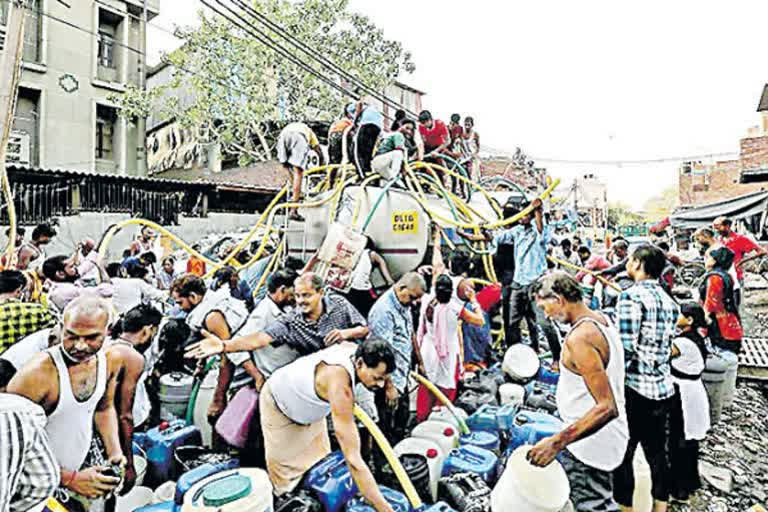Hyderabad: The water crisis is engulfing cities around the world. This is because of the threat posed by groundwater depletion. India is home to about 30 of the world's worst-hit cities. According to the recently released US Water Management Index, cities like Hyderabad, Delhi, Bangalore and Chennai are very close to 'Day Zero' status.
Also read: Water crisis a major challenge for humanity
The extreme water scarcity faced by Chennai in 2019 reminds the recent lockdown situation. Hotels, restaurants and businesses were closed. The World Wide Fund (WWF) reports that if effective water conservation measures are not taken, by 2030 all major cities in the country will be in dire need of water. According to the Water Pressure Index, India ranks 46th among countries at risk of a water crisis.
Challenge to systems
The main reasons for groundwater depletion are rapid urbanization, rising water consumption, climate change and destruction of water resources. According to the 'Integrated Water Management Index' released by the Niti Ayog, water consumption is doubling because of overcrowding in cities due to migration. Statistics show that the per capita water availability has been declining at a rate of 1.5 per cent per annum since 1990. The average population growth rate of cities in India is 49%. By 2035, about 15 crores urban population will have to meet their water needs. The biggest challenge ahead for municipalities is to design a comprehensive plan of action that can meet the water needs of a hugely growing population with limited water resources.
Also read: China's water war against India
Our country has been identified as a high threat country in the Climate Change Vulnerability Index. Studies show that by 2060, major cities in the country will consecutively have five per cent more water-scarce days than in 2015. Due to the non-availability of protected drinking water supply, two lakh people die every year in the country due to diseases. According to the Niti Ayog, the loss to GDP due to severe water shortages is six per cent per annum. Due to industrial waste, water resources in cities are becoming polluted and making people sick. The central government has designed special schemes for rural and urban areas to curb the ever-increasing water crisis in the country. The government aims to provide drinking water through taps across the country by 2024 and has launched the Amrita scheme for the construction of infrastructure for the supply of safe drinking water in major cities.
Also read: IISc develops novel solution to tackle water crisis
Groundwater is widely used for 64 per cent of the country's irrigation needs, 85 per cent for rural drinking water needs and over 50 per cent for urban needs. India is the largest user of groundwater in the world. More than 25,000 crore cubic meters of groundwater is being indiscriminately pumped out every year. The massive use of groundwater for industrial purposes is also causing severe water shortages in cities. Groundwater levels in Bangalore, Delhi and Ahmedabad have dropped by 80 per cent during 1998-2020. If the same trend continues there is a greater risk of leading to severe water scarcity.
The threat of water scarcity
Increasing demand for water means increasing pressure on water resources. Against this background robust water conservation measures are very essential. The use of solar power in industries can reduce water use. Only eight per cent of rainwater is absorbed back into the ground. Every effort should be made to conserve and restore to the ground every drop of water. Water harvesting pits should be widely promoted. Purified wastewater should be used for industrial purposes. Strict controls should be enforced to prevent industrial waste from entering river waters.
Also read: Residents connect stream to village amid water crisis in Chhattisgarh's Surguja
Encroachment of ponds and lakes in cities should be prevented and they should be revitalized as drinking water reservoirs. Leakages in the drinking water supply in cities should be minimized. Citizens should consider every drop of water very valuable and use it with utmost care. With the collective efforts of citizens and governments, solid planning and efficient water management systems combined with technology, the impending danger can be averted and the ‘Day Zero’ can be kept at bay. In order to achieve this goal, everyone has the sacred duty and responsibility of following efficient water conservation and management practices.



